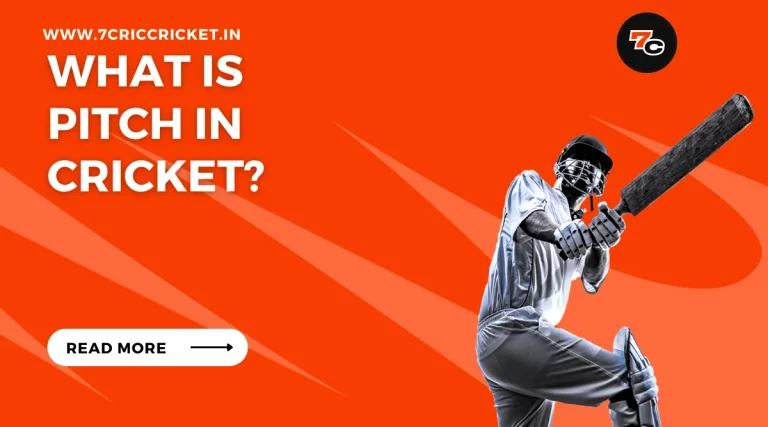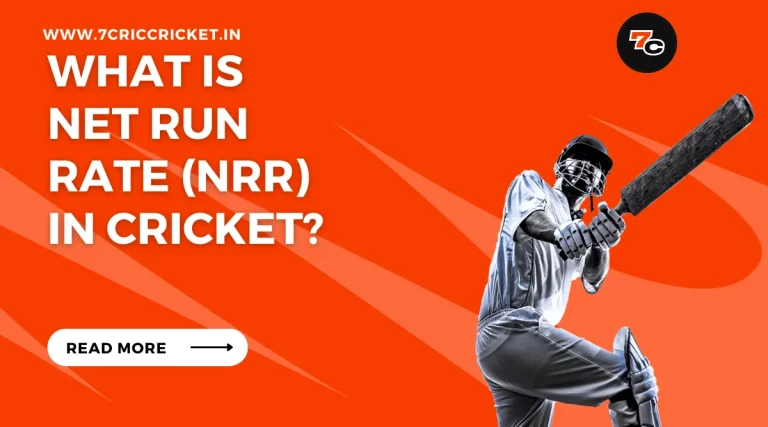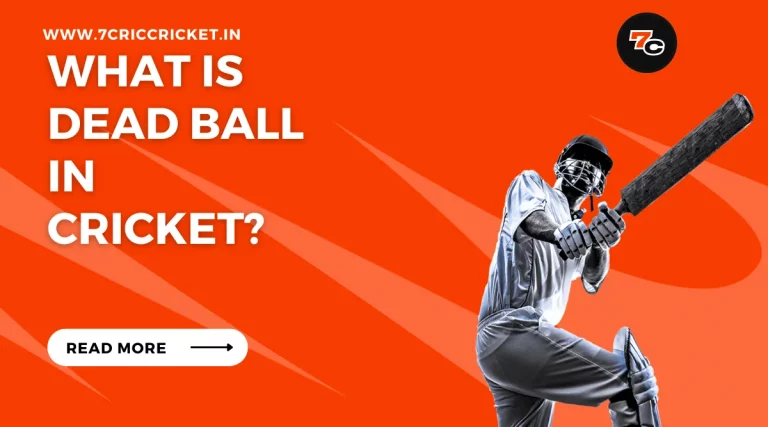What Is Out in Cricket?
Cricket, a gentleman’s game known for its technicality and strategic play, involves various methods to dismiss a batsman.
Understanding the intricacies of what constitutes an out is crucial for players, spectators, and enthusiasts alike.
Claim up to ₹15,000 Welcome Bonus Now
Claim up to ₹15,000 Welcome Bonus Now
- Fastest Indian Rupees Withdrawals
- Fast deposits with UPI
- 450% Bonus up to ₹1,000,000
From being bowled out to getting caught, run out, stumped, or declared leg before wicket (LBW), each mode of dismissal has its own set of rules and complexities.
In this article, we delve into the fascinating world of cricket, exploring the different ways a batsman can be dismissed.
Key Takeaways in This Article
ShowBowled
Bowled is a form of dismissal in cricket, in which the bowler successfully delivers the ball and it hits the stumps, resulting in the dismissal of the batsman.
This mode of dismissal is considered one of the most skillful and accurate ways to get a batsman out.
To achieve a successful ‘bowled’, bowlers employ various techniques and variations to deceive and outmaneuver the batsman.
Bowling techniques play a crucial role in the effectiveness of a ‘bowled’ dismissal.
The primary objective is to target the stumps and hit them with enough pace and accuracy to dislodge the bails.
Bowlers use different grips, wrist positions, and body movements to generate swing, seam, or spin, depending on the type of bowling they specialize in.
These techniques allow them to create variations in line, length, and movement, making it challenging for the batsman to predict the trajectory of the ball.
Throughout cricket history, many famous bowlers have been known for their accuracy and skill in achieving ‘bowled’ dismissals.
Players like Glenn McGrath, Wasim Akram, and Malcolm Marshall are revered for their ability to consistently hit the stumps and claim wickets.
Their mastery of bowling techniques, combined with exceptional control and accuracy, made them formidable opponents for any batsman.
Caught
When a fielder successfully catches a ball hit by the batsman, it results in the dismissal known as ‘caught’ in cricket.
The art of catching requires exceptional skill and concentration from the fielder. Here are four key aspects to consider when it comes to caught dismissals:
- Positioning:
Fielders need to position themselves strategically to anticipate where the ball might be hit. This involves understanding the batsman’s strengths and weaknesses, as well as reading the game situation.
- Hand-eye coordination:
A successful catch relies heavily on the fielder’s hand-eye coordination. They must track the ball’s trajectory, judge its speed and height, and time their jump or dive to perfection.
- Technique:
Fielders employ various techniques to catch the ball, depending on its height, speed, and direction. These techniques include the cup, reverse cup, and bucket hands, each designed to ensure a secure grip on the ball.
- Focus and concentration:
Fielders must maintain unwavering focus and concentration throughout the game. Dropping catches can have a significant impact on the outcome of a match, so fielders must train their minds to block out distractions and remain fully engaged.
While dropped catches are an unfortunate part of the game, fielding techniques continue to evolve, and players strive to improve their catching skills. The ability to take clean catches consistently can turn the tide of a match, making it an essential aspect of a fielder’s repertoire.
Run Out
A run out occurs when a fielding team successfully dislodges the bails with the ball while a batsman is attempting to complete a run.
This dismissal is a result of effective fielding techniques in cricket. Fielders need to be quick and agile to execute a run out successfully.
They must have a sharp eye to spot the opportunity to dislodge the bails and accurate throwing skills to hit the stumps directly.
Additionally, fielders need to be aware of the batsman’s positioning and movement to anticipate potential run outs.
To avoid getting run out, batsmen must employ strategies that minimize the risk.
Communication between the batsmen is crucial, as clear instructions and understanding can prevent misunderstandings and confusion.
Batsmen should also be aware of the fielders’ positions and the ball’s location to assess the possibility of a run out.
Quick decision-making is essential, as hesitations or indecisiveness can lead to run out opportunities for the fielding team.
Furthermore, batsmen must improve their running technique. They should run in a straight line, without swerving or zigzagging, to save precious time.
Swift turns, acceleration, and anticipation of potential run out attempts are also essential skills to avoid being dismissed in this manner.
Stumped
Continuing from the previous subtopic, the dismissal of being stumped in cricket occurs when the batsman is out of their crease and the wicket-keeper removes the bails with the ball.
This mode of dismissal requires the coordination and alertness of both the wicket-keeper and the bowler.
The wicket-keeper plays a crucial role in this dismissal, as it is their responsibility to gather the ball and remove the bails before the batsman can return to their crease.
The importance of footwork cannot be overstated in avoiding being stumped. A batsman needs to have quick and precise footwork to stay inside their crease and respond swiftly to the bowler’s delivery.
Good footwork allows the batsman to maintain balance and be in a position to react to the spin or pace of the ball.
It also helps them cover the necessary distance to reach the crease in time when attempting a run.
To avoid being stumped, a batsman must:
- Maintain a strong batting stance and be aware of their position in relation to the crease.
- Anticipate the bowler’s delivery and move their feet accordingly.
- React quickly to any changes in the trajectory or pace of the ball.
- Use effective footwork to get back into the crease swiftly and safely.
Leg Before Wicket (LBW)
Another mode of dismissal in cricket that is closely related to being stumped is the Leg Before Wicket (LBW) rule, which occurs when the batsman is struck on the leg by a delivery that would have otherwise hit the wicket.
LBW decisions have always been a topic of controversy in cricket, with debates surrounding the interpretation of the rule and its application by umpires.
The main challenge in making LBW decisions lies in determining whether the ball would have hit the stumps had it not hit the batsman’s leg.
This has led to numerous contentious moments in the history of the sport, where players, fans, and experts have argued over the fairness and accuracy of the decisions made.
However, with the advent of technology, the impact of LBW controversies has been significantly reduced.
The introduction of tools such as Hawk-Eye, Snickometer, and Hot Spot has allowed for a more objective assessment of LBW decisions.
Umpires now have access to technology that can track the trajectory of the ball and predict its path after hitting the batsman’s leg.
This has not only increased the accuracy of LBW decisions but has also provided a clearer understanding of the rule to players and spectators.
The use of technology in LBW decisions has brought about a sense of fairness and transparency in the game, ensuring that the outcome of matches is not influenced by subjective umpiring decisions.
Conclusion
In conclusion, understanding the different ways a player can be out in cricket is essential for both players and spectators.
The five main ways of getting out in cricket are bowled, caught, run out, stumped, and leg before wicket (LBW).
200% Welcome Bonus | SPRIBE
200% Welcome Bonus | SPRIBE
- Easy Sign-Up and Deposits
- Win 1000x Bet Amount!
- 450% Bonus up to ₹1,000,000
Each method has its own rules and considerations, adding complexity to the game.
By knowing these methods, individuals can better appreciate the strategic decisions and skill involved in the sport of cricket.
Frequently Asked Questions (FAQs)
What Happens if the Ball Hits the Batsman's Protective Gear and Then Goes on to Hit the Stumps?
If the ball hits the batsman’s protective gear and then goes on to hit the stumps, the batsman is considered out.
This sequence of events constitutes a dismissal known as “hit wicket.”
Can a Batsman Be Declared Out if the Ball Bounces Twice Before Hitting the Stumps?
A batsman can be declared out if the ball bounces twice before hitting the stumps.
However, if the ball hits the batsman’s protective gear and then goes on to hit the stumps, the batsman can also be given out.
Is a Batsman Allowed to Run After Hitting the Ball if It Is Caught by a Fielder?
In cricket, after a batsman hits the ball, they are allowed to run if the ball is caught by a fielder.
Running between wickets requires strategic techniques, while fielders need effective catching techniques.
What Happens if the Batsman Is Hit by a Fielder's Throw While Running Between the Wickets?
If a batsman is hit by a fielder’s throw while running between the wickets, it is considered a Batsman’s injury.
The umpire will make a decision based on the rules of the game.
Can a Batsman Be Declared Out if the Wicketkeeper Dislodges the Bails Before the Ball Reaches Him?
In cricket, a batsman can be declared out if the wicketkeeper dislodges the bails before the ball reaches him.
This dismissal is commonly known as a stumping and requires quick footwork from the batsman and precision from the wicketkeeper.








